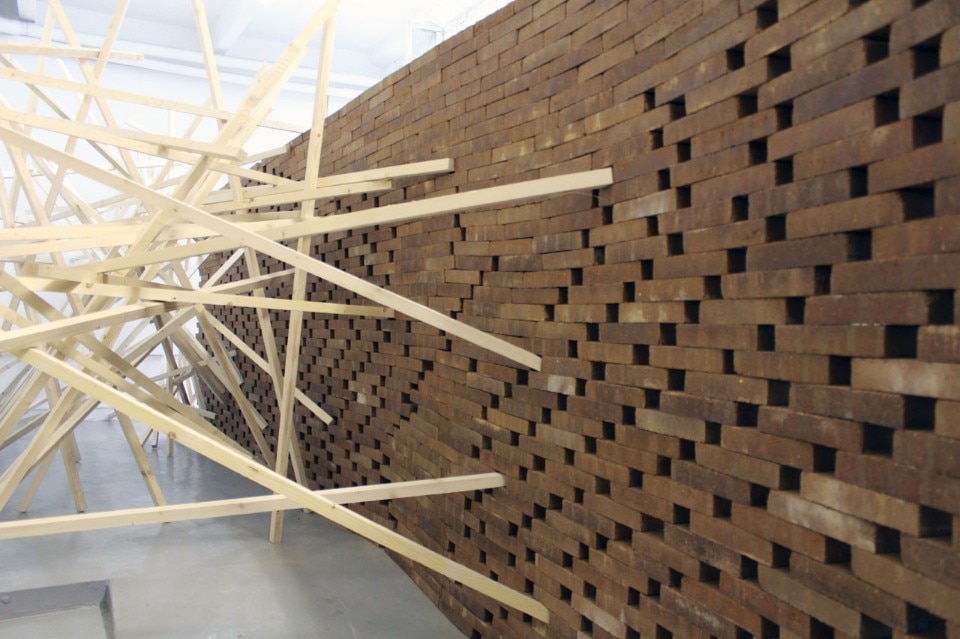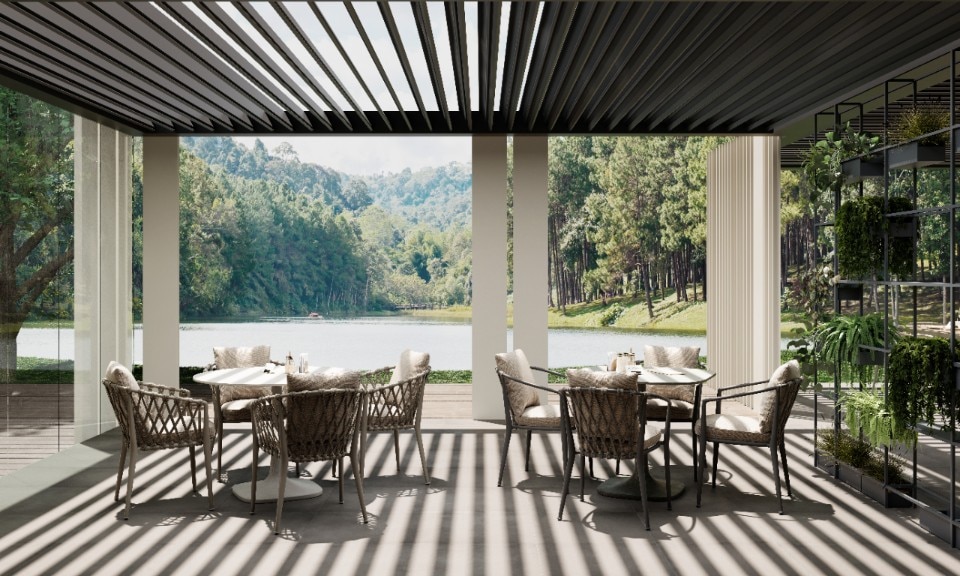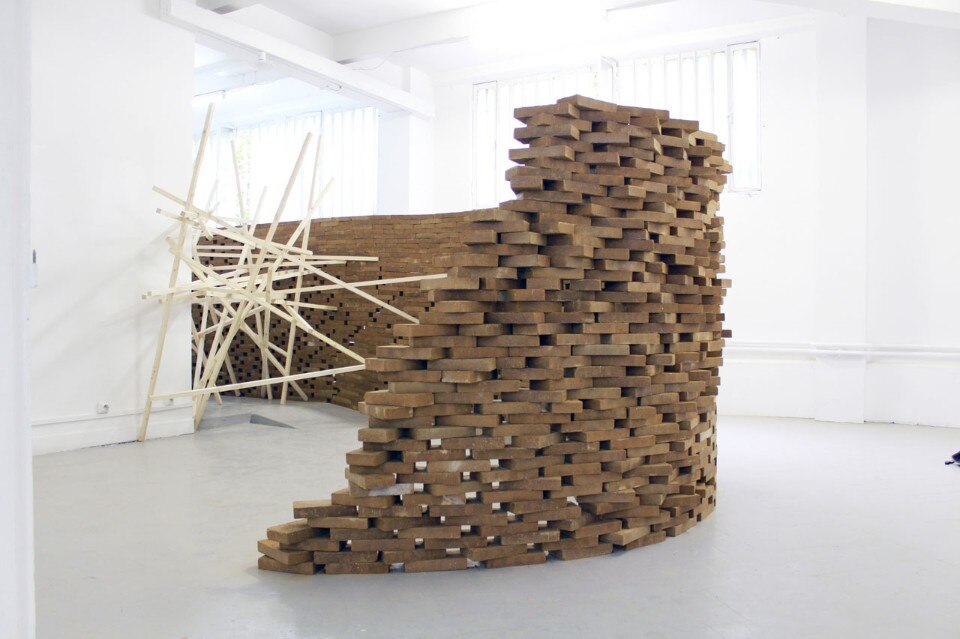
Salvator-John A. Liotta: Architecture is a composite act that materialises in two acts: first when we design it, and second when we construct it. It seems to be that with “Terres” you are making manifest a desire for an open approach to design.
Alia Bengana: Unfired earth – free, abundant and recyclable – allows a construction site to become a creative space where the design is shaped and realised simultaneously, activating a spontaneous, open and participatory process in which someone working on the construction can also add to the design. This empowers people through the choice of a material with a thousand-year-old tradition that nourishes a bottom-up process. Building with unfired earth bricks is closer to sculpting than designing; it involves shaping and supporting the material during the assembly, rather than bending it to the will of the design.
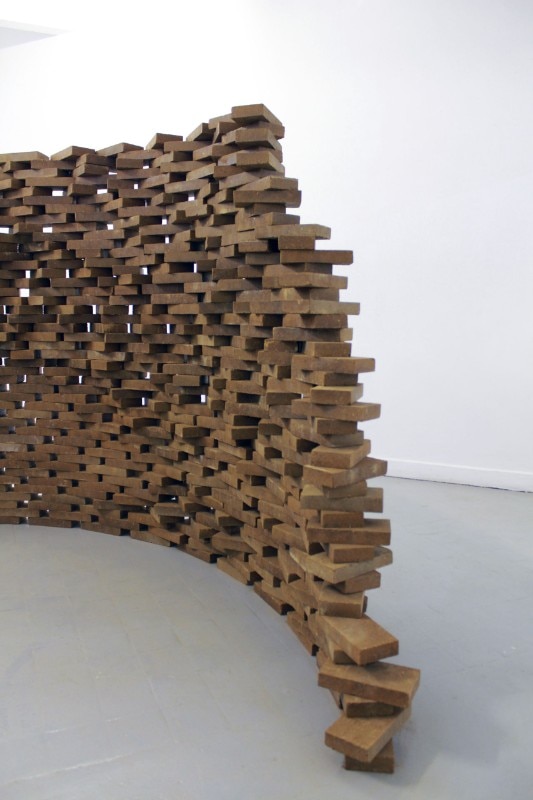
Salvator-John A. Liotta: Your installation is adapted to the context, attuning itself to the pre-existing geometries and highlighting even small variations. What were the energies that triggered the creative mechanism? It seems that the rotations of the bricks were produced by the movement of the people, as if integrating their dynamism.
Jacques Kaufmann: I pick up on points of sensitivity, intercepting the energies present in the site and revealing aspects of the context that I work in. This wall-installation is only ten metres long but there is a multitude of things happening in it, such as the effect produced by a local variation – the roughness of the floor – on the appearance of the whole. There is a 5 cm step and an incline in the floor and wall, things which are manifested only thanks to the installation. The reverberation set up by this small step influences the whole of the final form.
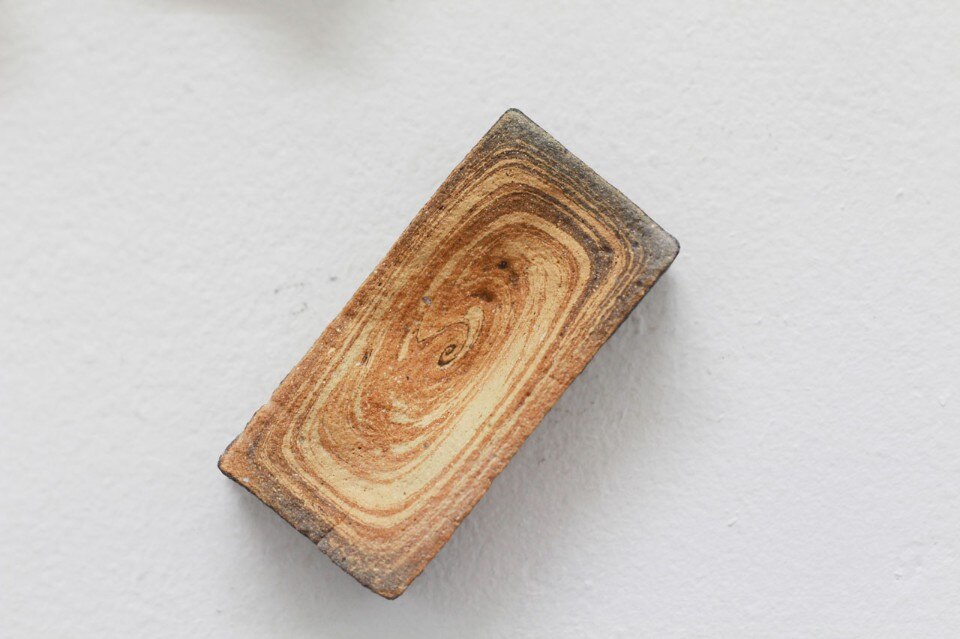
Salvator-John A. Liotta: In this ambivalent work, chaos seems to result from reasoning, while the ordered part results from episodic events or from intuition. The wooden supports seem positioned using reason, the bricks using sensibility.
Jacques Kaufmann: I worked through layering, slippages and rotations. The result is like a skin with a tingle running through it; there are vibrations that have a tangible effect on the movements of the bricks, which are placed one on another not by measurement but by eye, following intuition and inspiration rather than a pre-existing design. A chaotic design results instead from more structured reflection.
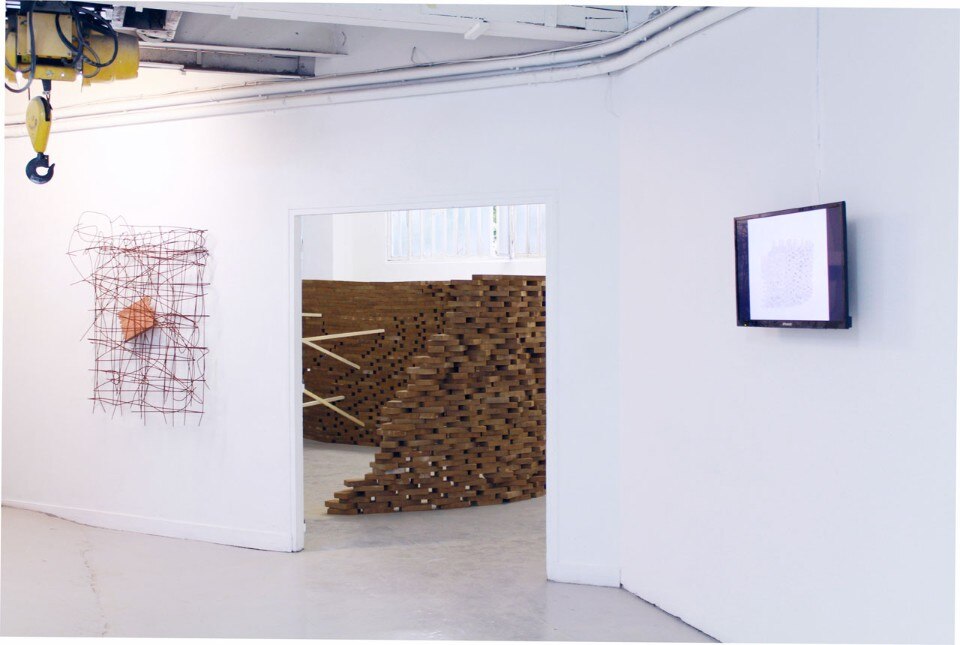
Salvator-John A. Liotta: In a highly energy-hungry world in which resources are growing scarcer, your work rediscovering an ancient material allows us to renew the formal language. I believe that traditions are alive only when they renew themselves.
Alia Bengana: Vernacular earth construction provided the basis for buildings worldwide before the Industrial Revolution. It is estimated today that more than a third of humanity still lives in habitats made of earth. But this material is little used in the West – it is criticised for being out-of-date, fragile and ephemeral. In fact, the material has revealed itself to be incredibly modern when faced with new challenges relating to shortages of raw materials and environmental problems.
The bricks we used for the installation incorporated 5% cement, which strengthened them. The interesting thing is that with just 5% cement, you double their resistance, making them very high-performance. With little effort you obtain an effective result thanks to the chemical reaction. The design method used for an earth building certainly differs from that used for concrete or wooden one. Earth has an evolutionary side and allows you to extend the design process through the construction. The work of Jacques Kaufmann prompts us to develop contemporary solutions for a traditional practice.
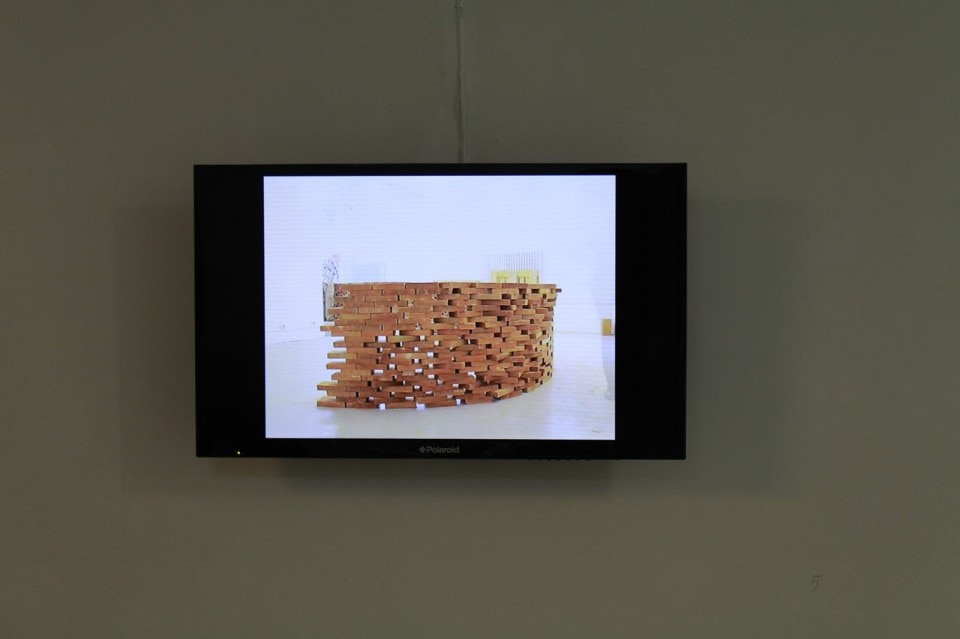
Salvator-John A. Liotta: You have dedicated your career to large terracotta installations, to variations of them in artistic forms that express a powerful sensibility in their relation with the material. Your work includes constructions that Peter Zumthor, Kengo Kuma, Wang Shu and Gramazio-Kolher (among others) would have built. Given that you have been experimenting for 30 years, I would say that your works provide a clear antecedent to the use of digital methods today to create strongly materially expressive buildings.
Jacques Kaufmann: Gramazio-Kolher wrote to me to say that their building system reached the same solution with the use of robots, but that if it had been done by hand, it would have been identical to mine. We arrived at the same result from two different directions. When I saw the splendid work of Kengo Kuma for the Folk Art Museum in Hangzhou in China, I could not but compare it with a pair of my works from the 1990s with a steel wire system and suspended terracotta tiles. The bricks by Peter Zumthor in the Kolumba Museum are fine, smooth and moving in their simplicity. Lastly, Wang Shu – with whom I have an active exchange – has found in my works an artistic metaphor for his architecture, which recycles waste materials and reinvents the tradition of using bricks and local Chinese materials. I very much admire all four of these architects.
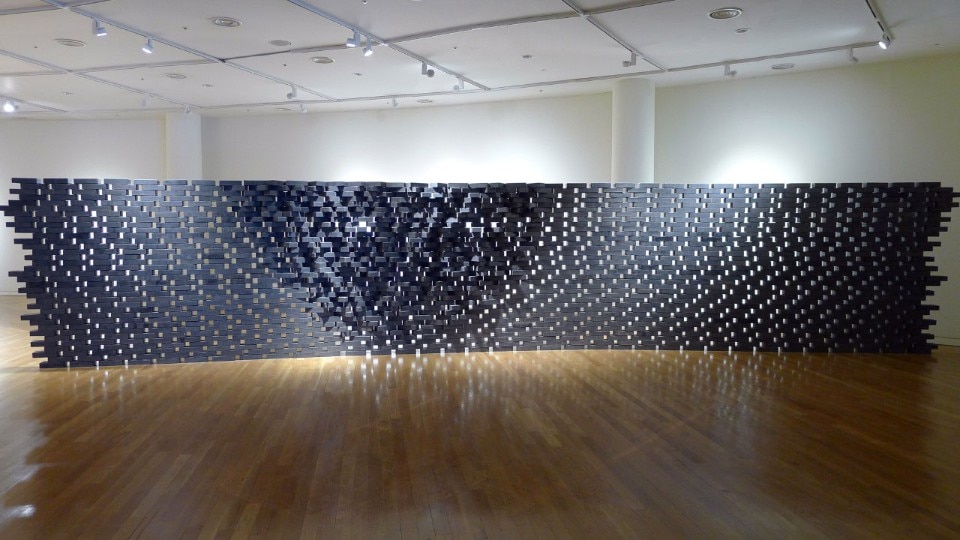
Salvator-John A. Liotta: In a world that requires us all to rethink the building practices typical of the linear economy, your idea of using unfired earth seems to take us towards the discourse of the circular economy, where the material from the place returns to the place itself, and preserves formal, expressive possibilities that are experimental in nature. In some ways, your practice is both beautiful and good.
Jacques Kaufmann: “Le monde pour se faire a besoin des mythes et des briques.” Translated, this means: “To build the world you need myths and bricks.” The material and the dream both contribute to the creation of reality.
Unfired earth bricks are sustainable because they are produced in situ, they are easy to create and there is no need for heavy machinery, anyone can reuse them, and they are recyclable because they can return to the earth. Once we have the bricks, all that is left is to create the myths.
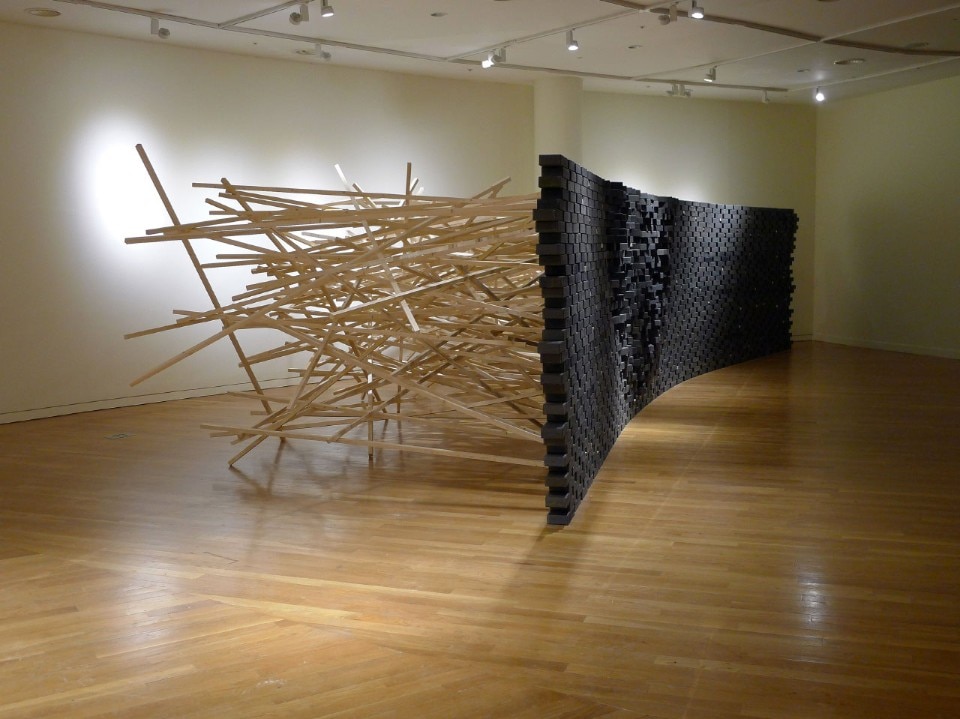
until 2 June 2016
Terres
Galerie Episodique
Rue des Nanettes 1, Paris
Curator: Alia Bengana
Artist: Jacques Kaufmann
Video: Shainda Lane
Gallerist: Alexandra Roussopoulos

Marble matters– exploring Carrara’s legacy
Sixteen young international architects took part in two intensive training days in Carrara, organized by FUM Academy and YACademy, featuring visits to the marble quarries and a design workshop focused on the use of the material.


